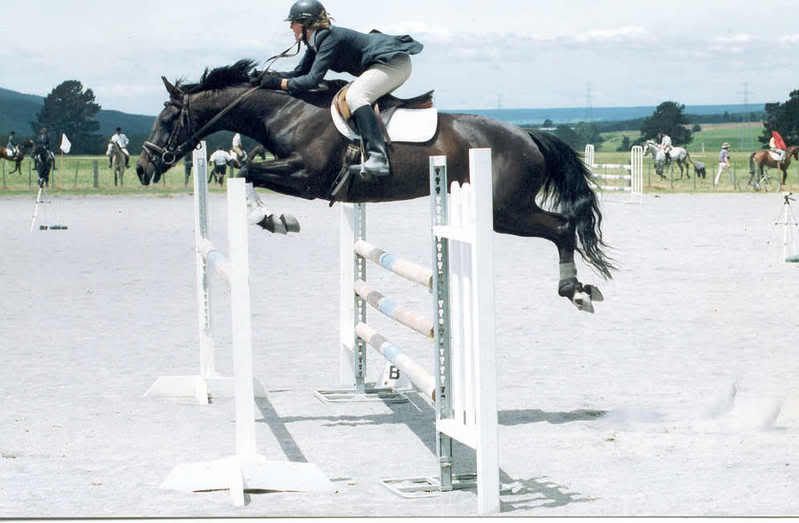Contained in this post are a thousand pieces of informtaion I struggle to do myself, so I understand how difficult it can be to see your take-off point to the fence. Really it is very easy and I believe everyone can learn to do it well. The trick is to not panic about it.
The basics?
-Get a good canter
-Maintain that canter
-Go to the jump while maintaining that canter.
Thats pretty much all there is to it. The quality of your canter is key to all showjumping. It needs to be active, forward, full of impulsion and light in front. Training this canter is the work of years, but you understand what I'm saying.
Then you need to develop that canter so that it's like a metronome for rhythym. Some horses are naturally very rhythymic and ,thus, a lot easier to teach this, others require more work. Then when you turn to the fence you need to just do as much as you have to to keep that canter. When you watch really good riders they make it look easy because they do just the minimum of what they have to do. When you are cantering down to a fence, if that canter is 12 ft, 12ft 12ft you will find it a lot easier to find your take-off point compared to 10 ft, 11ft, 10 ft, 12ft because in the second situation as your stride changes the point you are going to reach the fence at changes as well.
Exercises for this? Canter a LOT of ground rails. Often if I'm struggling with my eye to the take off spot I will go back to rails on the ground and just canter over them and Viola problem solved. So canter a lot of rails, it also teaches your horse to stay relaxed approaching the 'fence'. Do whole course of groundrails until you can just canter them while jkeeping that rythym and then build little jumps and do the same thing. Train your horse and your eye at the same time.
Subscribe to:
Post Comments (Atom)

God its SO all about the canter :) When its right everything else is simple....and when its wrong its so wrong LOL!
ReplyDeleteYou're right a good solid canter stride is so important. I've also found that having an adjustable horse helps too.
ReplyDeleteYou are so right about it being about the rhythm. You see so many riders who feel like they have to fuss with their horses - and sure enough, they end up with a chip or a long spot - if they had left the horse alone and concentrated on feeling the rhythm they would have done much better. But then there was our jumper mare with the rhythmical 15 foot stride . . .
ReplyDeleteGood post! I love using ground rails when I am having an issue. I figure 2 things... 1. If I can't get it right with ground rails then no use trying it over a jump and 2. I can practice as much as I want and try out different things (line, pace, etc..) without as much wear and tear on my boys joints. Win- win situation
ReplyDelete